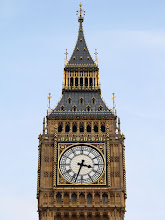Times Square: "See Something, Say Something"
On 1 May, a bomb was discovered in a car in Times Square. Faishal Shahzad, a naturalized US citizen born in Pakistan, is charged with the terrorist attempt.
On 1 May, a bomb was accidentally found in a car in Times Square, the well-known and crowded spot of New York. Lance Orton, a T-shirt salesman and a Vietnam veteran, noticed the smoke coming from the SUV and alerted the police on Saturday. At the same time, another street vendor Duane Jackson found the car suspicious and called the police as well. NYPD discovered in the car a crude firebomb: three propane tanks, two full gasoline containers, M-88 firecrackers, and two alarm-clock detonators. The bomb could have had caused several casulties if not found on time.
In 72 hours, the officials caught the major suspect Faishal Shahzad, a 30 yeas old, naturalized US citizen born in Pakistan, now living in Bridgeport, Connecticut. Although initially officials claimed that there was no evidence that this attempt was linked to any terrorist group, after the discovery of Shahzad, it seems that the Pakistani Taliban are behind this terror plot. There are strong evidences suggesting that the terrorist group, which is closely related to the al-Qaeda, helped facilitate and finance the attack. Shahzad was arrested two days after the incident at the JFK Airport when he wanted to leave the country to fly to Dubai. Officials investigate further the case and try to determine what might have motivated Shahzad.
On 1 May, a bomb was accidentally found in a car in Times Square, the well-known and crowded spot of New York. Lance Orton, a T-shirt salesman and a Vietnam veteran, noticed the smoke coming from the SUV and alerted the police on Saturday. At the same time, another street vendor Duane Jackson found the car suspicious and called the police as well. NYPD discovered in the car a crude firebomb: three propane tanks, two full gasoline containers, M-88 firecrackers, and two alarm-clock detonators. The bomb could have had caused several casulties if not found on time.
In 72 hours, the officials caught the major suspect Faishal Shahzad, a 30 yeas old, naturalized US citizen born in Pakistan, now living in Bridgeport, Connecticut. Although initially officials claimed that there was no evidence that this attempt was linked to any terrorist group, after the discovery of Shahzad, it seems that the Pakistani Taliban are behind this terror plot. There are strong evidences suggesting that the terrorist group, which is closely related to the al-Qaeda, helped facilitate and finance the attack. Shahzad was arrested two days after the incident at the JFK Airport when he wanted to leave the country to fly to Dubai. Officials investigate further the case and try to determine what might have motivated Shahzad.


